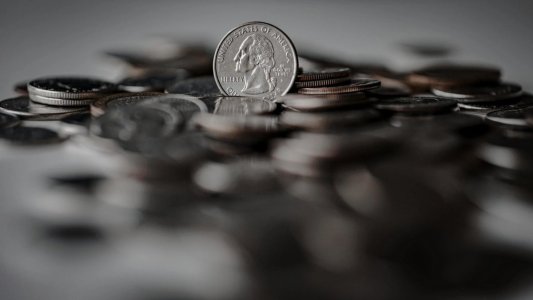No more pennies? How Trump’s decision could change everyday purchases
By
Veronica E.
- Replies 0
For more than two centuries, the penny has been a familiar part of everyday life—tucked into pockets, scattered in drawers, and collected in jars across the country.
But now, this small yet iconic coin finds itself at the center of a major discussion.
In a move that has sparked both curiosity and debate, President Donald Trump has taken a step that could change the future of the penny forever.
With concerns over rising production costs and government efficiency, his recent directive has left many wondering: Is this the end of the penny as we know it?
And if so, what will this mean for everyday transactions and the way we handle cash?

The penny, once a symbol of American currency, now faces a harsh financial reality—it costs more to produce than it's worth. “For far too long, the United States has minted pennies which literally cost us more than 2 cents. This is so wasteful!” Trump expressed in a post on his Truth Social site.
According to the U.S. Mint’s 2024 fiscal report, nearly 3.2 billion pennies were produced last year, leading to a loss of $85.3 million. The cost of producing a single penny has climbed to nearly $0.037, a noticeable increase from the previous year’s $0.031.
The penny has a long and storied history, first minted in 1793 and evolving through various designs over the years. It has been a staple in American transactions, a token of luck, and even a sentimental keepsake.
However, as inflation reduces its purchasing power and production costs continue to rise, many have begun questioning its practicality. This isn’t the first time the US has reconsidered its smallest coin—back in 1857, the half-cent coin was retired when it was deemed unnecessary. Could the penny be next?
Trump’s administration has consistently emphasized the importance of reducing wasteful spending, and the penny’s elimination appears to be part of a broader initiative to improve government efficiency.
Led by Elon Musk’s Department of Government Efficiency, the plan aims to identify $2 trillion in potential savings across various sectors. “Let’s rip the waste out of our great nation’s budget, even if it’s a penny at a time,” Trump stated, reinforcing his commitment to financial responsibility.

While the directive is clear, the path forward is more complex. Historically, changes to US currency require Congressional approval, making the future of the penny uncertain.
However, some experts, like Northeastern University economics professor Robert K. Triest, suggest that the Treasury Secretary may have some flexibility in deciding whether to continue minting new pennies without direct legislative action.
If the US moves forward with discontinuing the penny, it wouldn’t be the first country to do so. Canada stopped producing its penny in 2012, joining several other nations that have phased out their lowest denomination coins.
Supporters of the move highlight potential benefits such as cost savings, faster cash transactions, and a more efficient monetary system.
Many Americans have fond memories tied to the penny, whether it’s saving them in a jar or finding a lucky one on the ground. Others see it as an outdated coin that no longer serves a practical purpose.

We’d love to hear from you! Do you think it’s time to retire the penny, or should it remain a part of American currency? Share your thoughts, memories, and opinions in the comments below!
Also read:
This penny in your drawer could be worth more than you think!
Discover the one penny date that could turn your loose change into a $240,000 windfall—learn the secret behind its rare material!
But now, this small yet iconic coin finds itself at the center of a major discussion.
In a move that has sparked both curiosity and debate, President Donald Trump has taken a step that could change the future of the penny forever.
With concerns over rising production costs and government efficiency, his recent directive has left many wondering: Is this the end of the penny as we know it?
And if so, what will this mean for everyday transactions and the way we handle cash?

A symbol of American currency for over two centuries—could the penny soon be a thing of the past? Image Source: Pexels / VOLKAN SORKUN.
The costly coin conundrum
The penny, once a symbol of American currency, now faces a harsh financial reality—it costs more to produce than it's worth. “For far too long, the United States has minted pennies which literally cost us more than 2 cents. This is so wasteful!” Trump expressed in a post on his Truth Social site.
According to the U.S. Mint’s 2024 fiscal report, nearly 3.2 billion pennies were produced last year, leading to a loss of $85.3 million. The cost of producing a single penny has climbed to nearly $0.037, a noticeable increase from the previous year’s $0.031.
The penny’s past and present
The penny has a long and storied history, first minted in 1793 and evolving through various designs over the years. It has been a staple in American transactions, a token of luck, and even a sentimental keepsake.
However, as inflation reduces its purchasing power and production costs continue to rise, many have begun questioning its practicality. This isn’t the first time the US has reconsidered its smallest coin—back in 1857, the half-cent coin was retired when it was deemed unnecessary. Could the penny be next?
A push for efficiency
Trump’s administration has consistently emphasized the importance of reducing wasteful spending, and the penny’s elimination appears to be part of a broader initiative to improve government efficiency.
Led by Elon Musk’s Department of Government Efficiency, the plan aims to identify $2 trillion in potential savings across various sectors. “Let’s rip the waste out of our great nation’s budget, even if it’s a penny at a time,” Trump stated, reinforcing his commitment to financial responsibility.

Elon Musk's Department of Government Efficiency is exploring cost-cutting measures—does that include saying goodbye to the penny? Image Source: YouTube / CBS Mornings.
The legal and legislative hurdles
While the directive is clear, the path forward is more complex. Historically, changes to US currency require Congressional approval, making the future of the penny uncertain.
However, some experts, like Northeastern University economics professor Robert K. Triest, suggest that the Treasury Secretary may have some flexibility in deciding whether to continue minting new pennies without direct legislative action.
Global trends and the future of currency
If the US moves forward with discontinuing the penny, it wouldn’t be the first country to do so. Canada stopped producing its penny in 2012, joining several other nations that have phased out their lowest denomination coins.
Supporters of the move highlight potential benefits such as cost savings, faster cash transactions, and a more efficient monetary system.
As we navigate this debate, it’s clear that the discussion around the penny is about more than just economics—it’s also about tradition and change.Many Americans have fond memories tied to the penny, whether it’s saving them in a jar or finding a lucky one on the ground. Others see it as an outdated coin that no longer serves a practical purpose.
Key Takeaways
- President Trump has directed the Treasury Department to cease the production of new pennies, highlighting their cost inefficiency.
- The cost of producing the one-cent coin reportedly exceeds its face value, with the U.S. Mint losing money on both pennies and nickels.
- The authority to eliminate the penny may rest with Congress, though there is debate over whether the Treasury Secretary has limited autonomy in this matter.
- Proposals to phase out the penny have been considered for years, with arguments for its elimination including economic savings and efficiency at checkouts.
We’d love to hear from you! Do you think it’s time to retire the penny, or should it remain a part of American currency? Share your thoughts, memories, and opinions in the comments below!
Also read:
This penny in your drawer could be worth more than you think!
Discover the one penny date that could turn your loose change into a $240,000 windfall—learn the secret behind its rare material!






